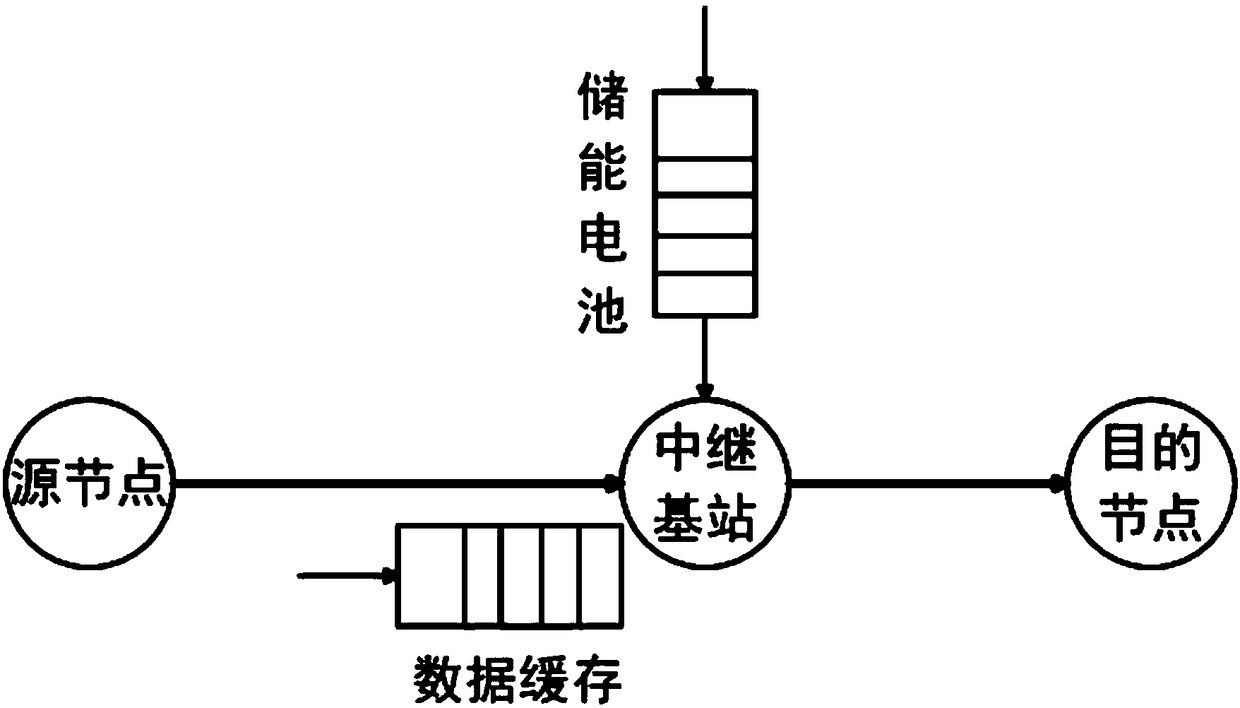Energy collection wireless relay network throughput maximum method based on deep reinforcement learning
A wireless relay network and reinforcement learning technology, applied in the field of energy-intensive wireless relay networks, can solve the problems of huge energy consumption and greenhouse gas emissions, and achieve the effects of increasing profits, maximizing throughput, and reducing power consumption.
- Summary
- Abstract
- Description
- Claims
- Application Information
AI Technical Summary
Problems solved by technology
Method used
Image
Examples
Embodiment Construction
[0052] The present invention will be described in further detail below in conjunction with the accompanying drawings.
[0053] refer to figure 1, a method for maximizing the throughput of energy-intensive wireless relay networks based on deep reinforcement learning, in other words, through joint time scheduling and power allocation to achieve maximum system benefit with end-to-end maximum throughput. The present invention is based on an energy-collecting wireless relay network system (such as figure 1 shown). In the energy-intensive wireless relay network system, time scheduling and power allocation are optimized through deep reinforcement learning to achieve the maximum transmission rate. The invention proposes a renewable energy optimization method for maximizing throughput for the time scheduling and power control problems in energy-collecting wireless relay networks under the condition of limited data cache and energy storage batteries. The method includes the following ...
PUM
 Login to View More
Login to View More Abstract
Description
Claims
Application Information
 Login to View More
Login to View More - R&D
- Intellectual Property
- Life Sciences
- Materials
- Tech Scout
- Unparalleled Data Quality
- Higher Quality Content
- 60% Fewer Hallucinations
Browse by: Latest US Patents, China's latest patents, Technical Efficacy Thesaurus, Application Domain, Technology Topic, Popular Technical Reports.
© 2025 PatSnap. All rights reserved.Legal|Privacy policy|Modern Slavery Act Transparency Statement|Sitemap|About US| Contact US: help@patsnap.com



